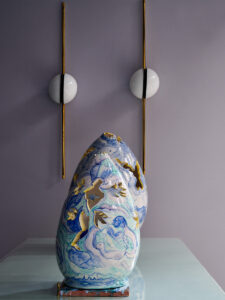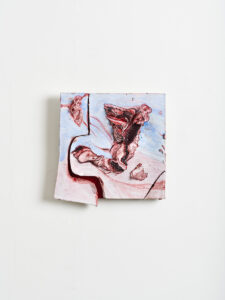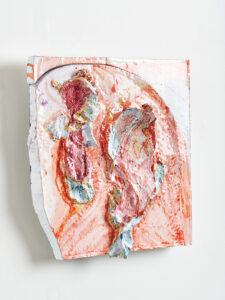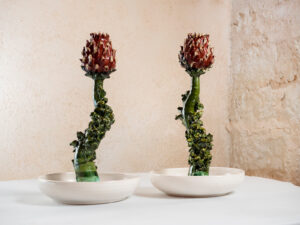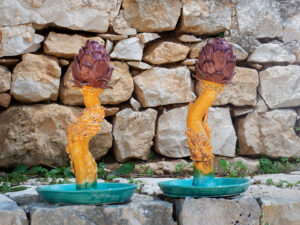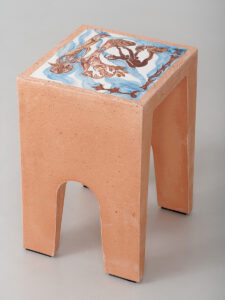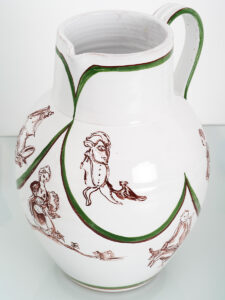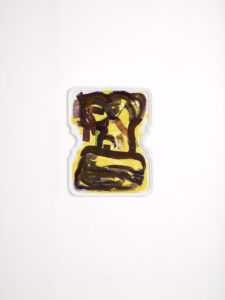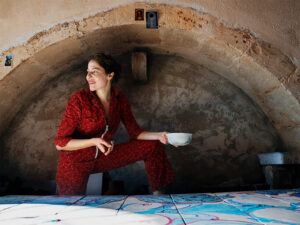From the US, but very familiar with both Italy and its artists, the eclectic Lola Montes – painter, ceramist, director and designer – set up her atelier in Sicily. She has travelled around the whole region to delve into its techniques, traditions and myths. Seeing the island as an outsider, she has been able to recognise the fundamental elements of her research, blending art and life in an inseparable bond.
You were born in New York, but you have been living in Sicily for many years and have many Italian friends in the art world. Your journey is opposite to that of many other – Italian and other – artists by leaving the Big Apple. What do you like about it, or how does being an outsider limit you?
Perhaps the sense of being a foreigner gives me comfort, distance and solitude. I can find my place in this distance. I am impressed by the general kindness and courtesy of the Italians, especially towards life. Taking care of things and sharing are part of their education. People are also very proud when they do a good job. Sicily has a different philosophy and space to the rest of Italy, something that allows me to create starting from an inner conversation, while in New York, where I was born, I felt that I started from a dialogue with the outside. I would never like to be considered local anywhere, with people watching my every move. Certainly, as a foreigner I have to understand how all the bureaucracy works (how much time is wasted), but generally things work on a very human level. Sometimes I miss the familiarity of New York; there it’s as if anything is possible: it’s all quick, transactions are direct and transparent. But I wouldn’t change one for the other. It’s a kind of dance between the new and old worlds, where often it’s easier to do things in the traditional way because you’re talking to a person (and not a robot).
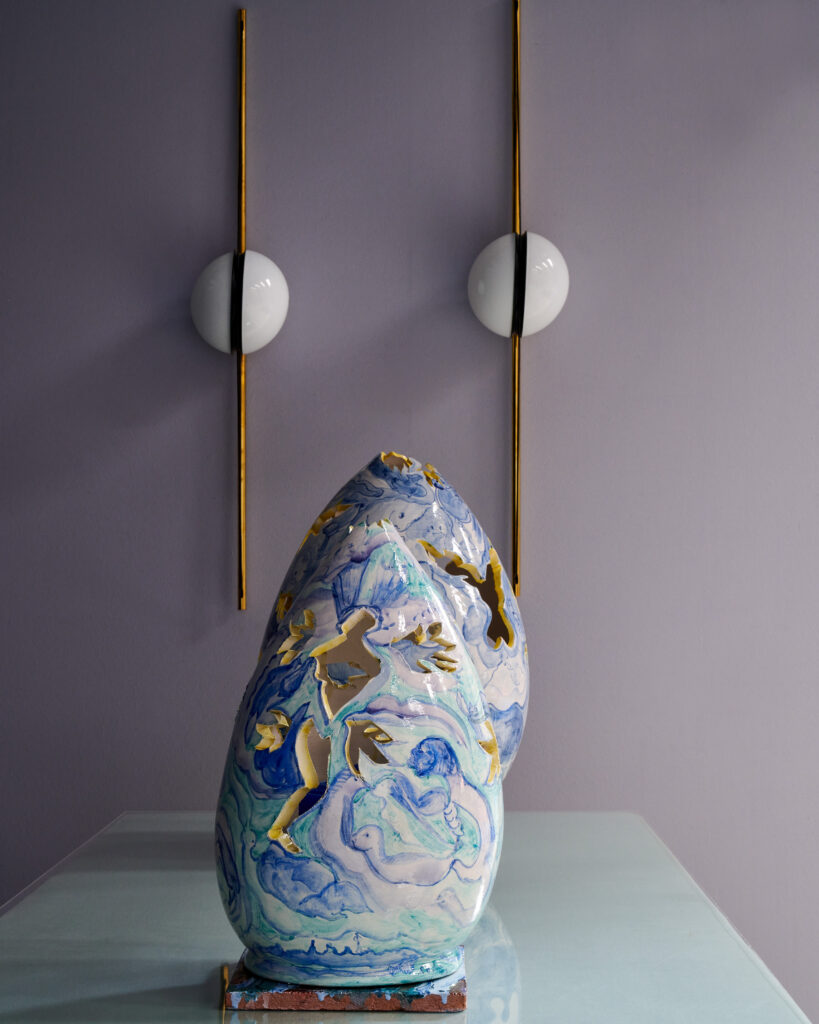
Painting and ceramics alternate in your artistic practice, and at times are interwoven. How did ceramics come into your life, and why have they become indispensable in your exploration?
I went to Sicily for the first time in 2018 and began to live there, working outdoors. I am influenced by the places I visit, and look for the advantages of opening up to different materials or ways of working, especially how craftsmen do things. I began to work in a brickwork, making tiles. I think painting on ceramics is an extension of my watercolours. There is a liquid element in drawing on ceramics, it’s very similar to drawing on paper, but the surface is hard. My painting has always come from drawing. Drawing on paper with watercolours soon became drawing on ceramics. I find it interesting working with this new surface and technique, where the drawing is fired and the colours change: you find yourself responding to these variables, so the type and quality of the material have an impact, they change the appearance of the work. For me, working with this process has offered new opportunities, I see new types of paintings. So my drawings take shape on shapes. I am experimenting by painting my drawings on ceramics, which have a physical body and are unique objects.

What’s the end result?
It is a relationship with other people who have worked with this material in the past, whether Portuguese azulejos you see outside the churches in Lisbon or Delft porcelain in the Netherlands; Luca della Robbia who makes relief murals, or Lucio Fontana who experimented ceramic sculpture in a very particular way. All these connections become sources that come into play. This is how I am approaching this process; I surprise myself by doing things I had never imagined doing. There seems to be a way to approach painting: a hybrid blend of my own idea of drawing and painting, especially thinking how the drawing is incorporated into the surface to becomes an indivisible part of the material, in contrast to painting on canvas. Everything I do opens up to something else I am creating, it is a part of it. They say that art is a practice, and I am practising it. It is a result of my past and the place I am in, with the materials I find around me.
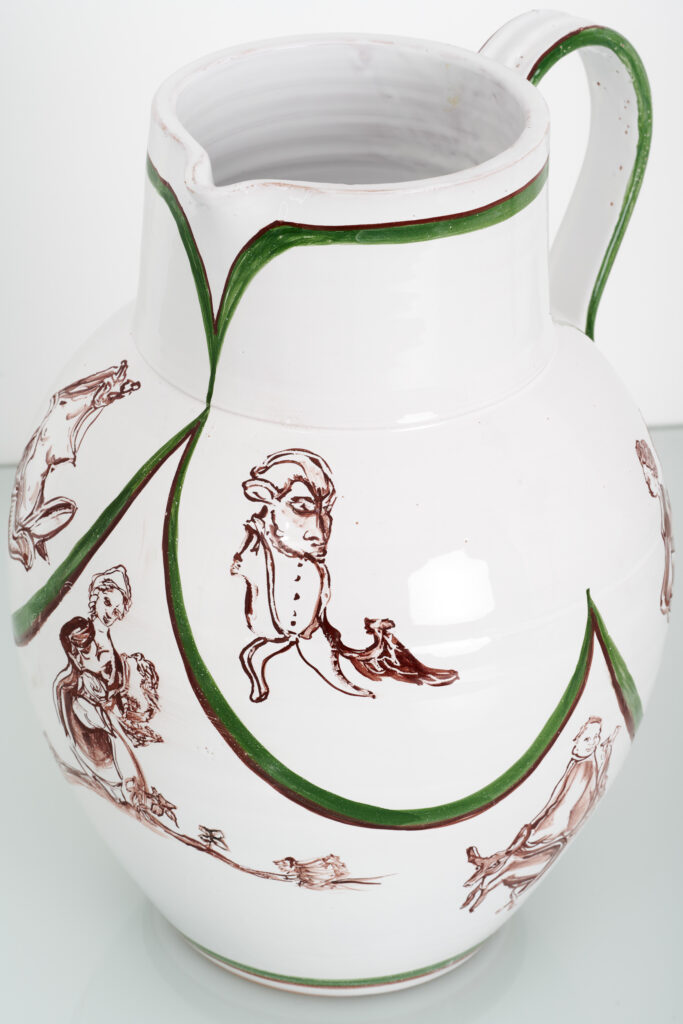
The function and design of a product are two fundamental aspects of the history of ceramics and their applications. It seems like you want to maintain this functional element in many of your works. Where does this desire for usability come from, and why does it interest you?
The function of these objects comes from a need: I made candlesticks because I needed light, to light a table outside, surrounded by darkness. Then I was looking for a tray to carry the coffee out after lunch, so I made a tray. Then a jug for water or flowers. Glasses. Stools for sitting outside, made from concrete with inlaid ceramic surfaces that withstand the bad weather, so are eternal. An incense holder to burn things, and so on: this is the art of necessity. I certainly consider these pieces as sculpture, as they are all unique and cannot be replicated, because the colours, glazes and clay are hand-made, so none of them are the same as any of the others. In this way, they are interconnected, they belong to their own universe.
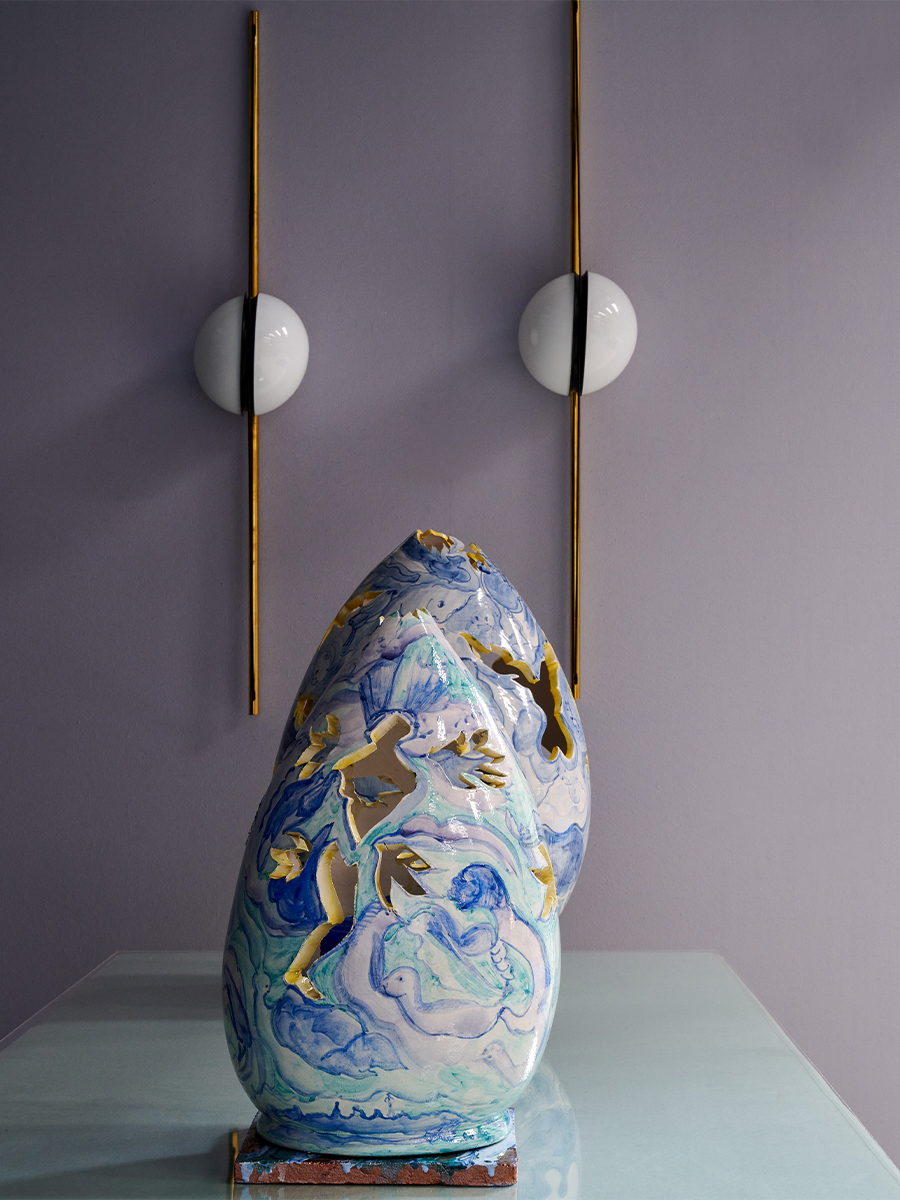
Two Eggs lamp Angel protection, hand-painted terracotta. Courtesy of Nilufar, ph. Filippo Pincolini
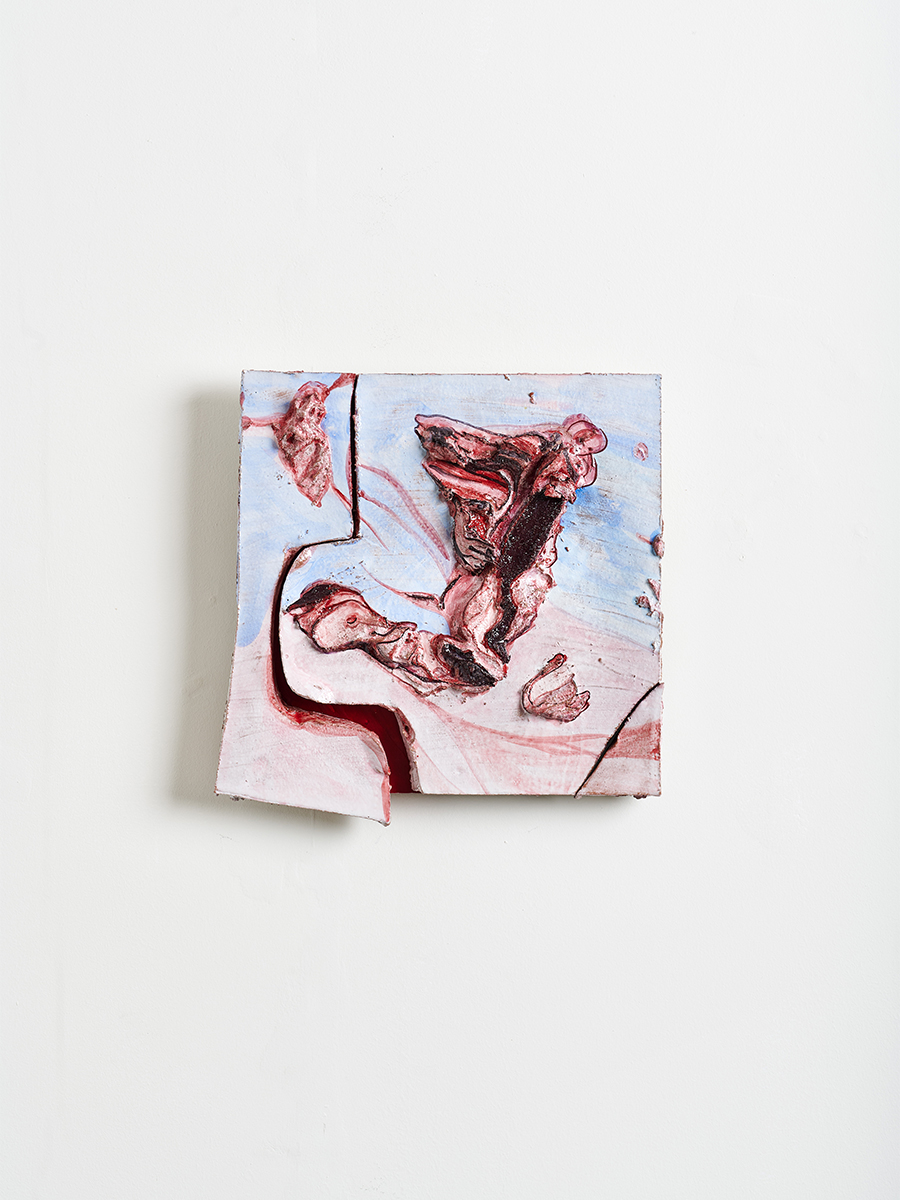
Penitenza, bas-relief in hand-painted ceramic mounted on a steel base, unique piece. Courtesy of Nilufar, ph. Filippo Pincolini
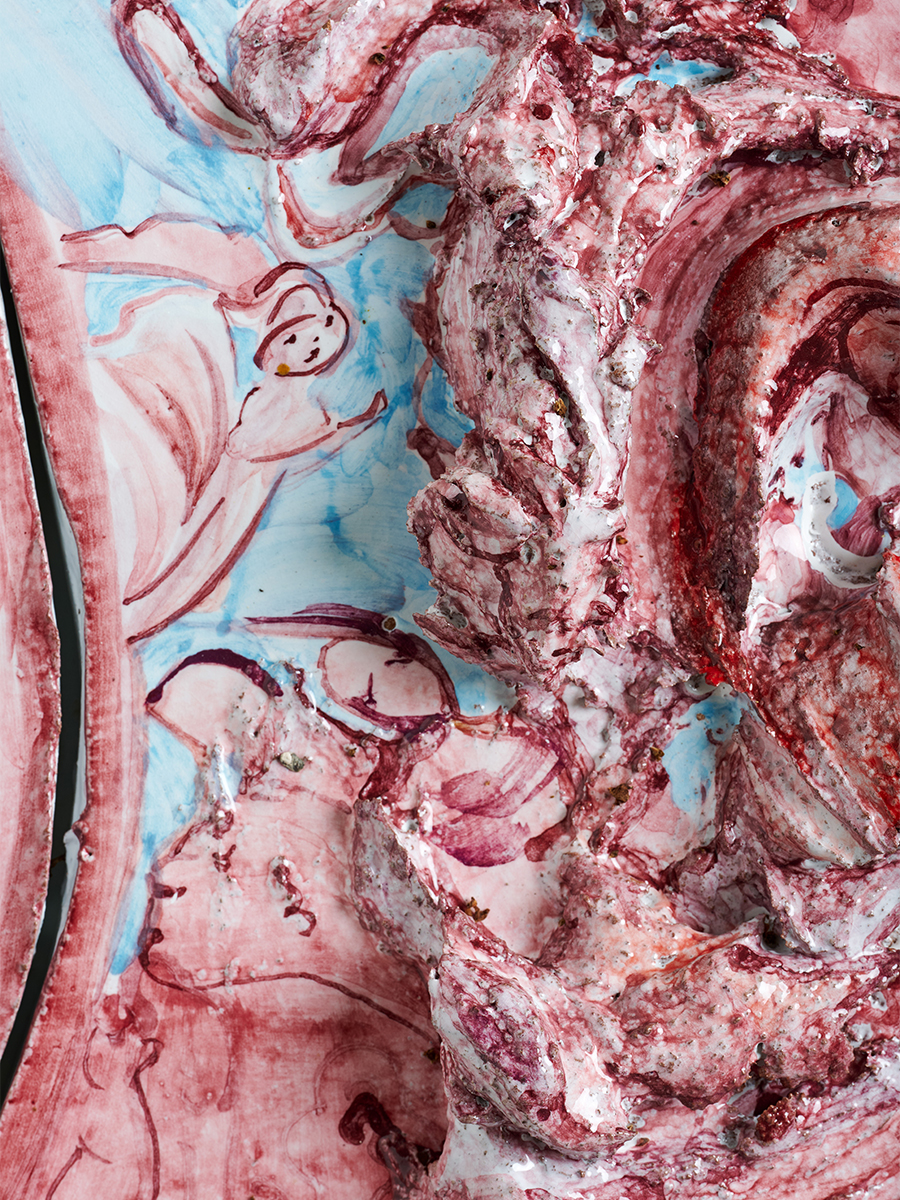
Vai via, bas-relief in hand-painted ceramic mounted on a steel base, unique piece. Courtesy of Nilufar, ph. Filippo Pincolini

Guardia del corpo, bas-relief in hand-painted ceramic mounted on a steel base, unique piece. Courtesy of Nilufar, ph. Filippo Pincolini
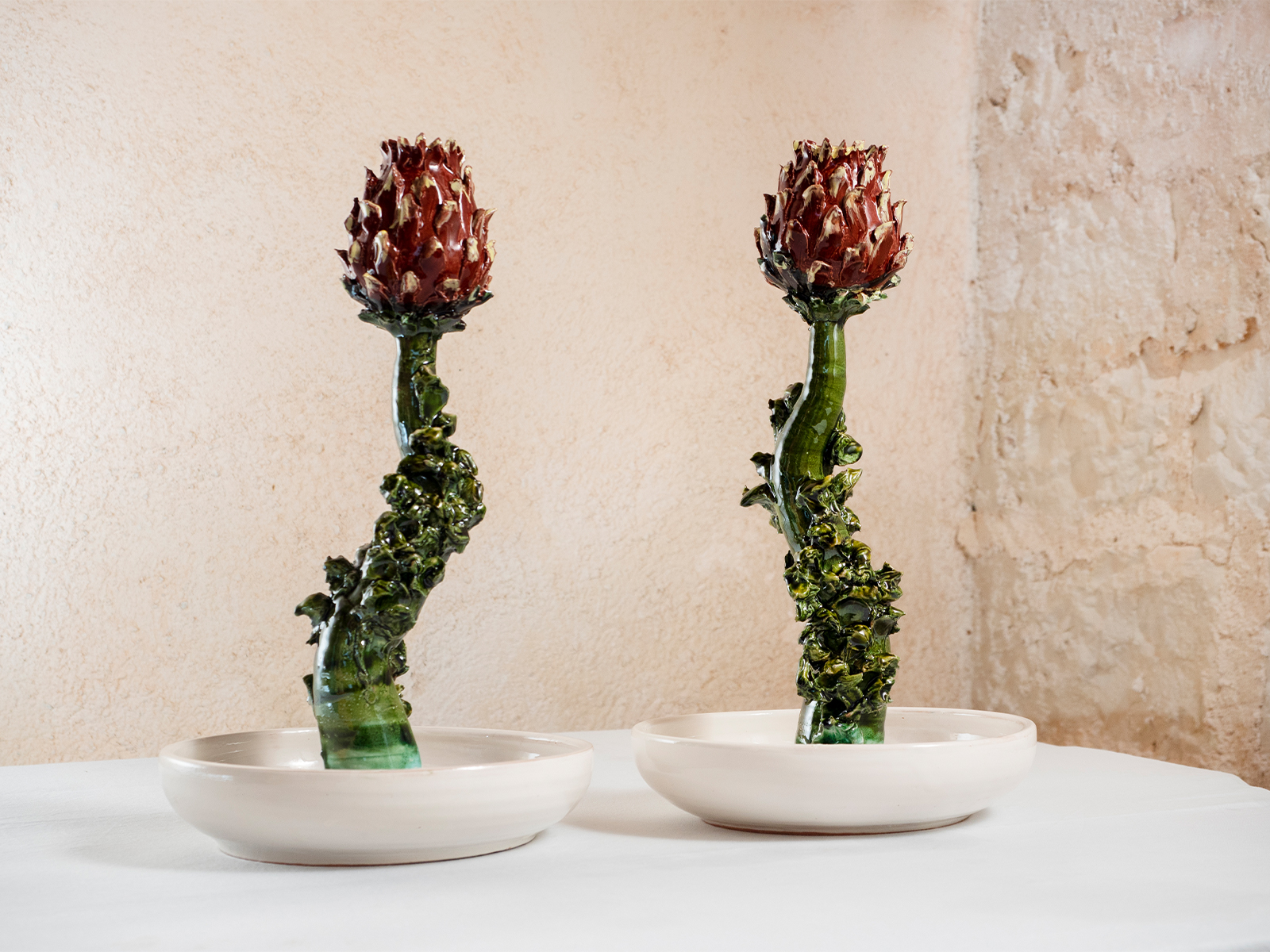
Carciofo candlesticks, hand-sculpted and painted ceramic, unique pieces. Courtesy of Nilufar, ph. Alessandro Sala Cesura

Three Carciofo candlesticks, hand-sculpted and painted ceramic, unique pieces. Courtesy of Nilufar, ph. Filippo Pincolini

Carciofo candlesticks, hand-sculpted and painted ceramic, unique pieces. Courtesy of Nilufar, ph. Alessandro Sala Cesura
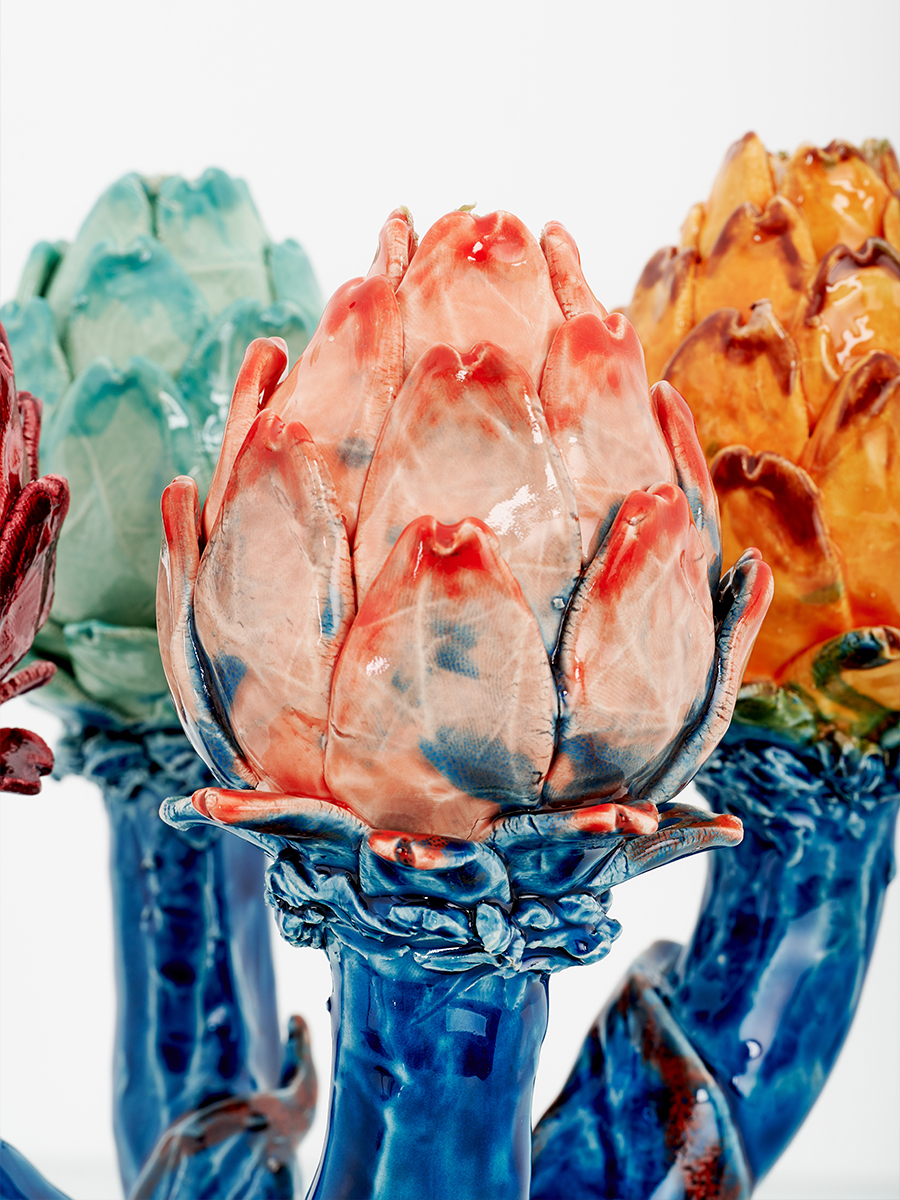
Carciofo candlesticks, hand-sculpted and painted ceramic, unique pieces. Courtesy of Nilufar, ph. Filippo Pincolini
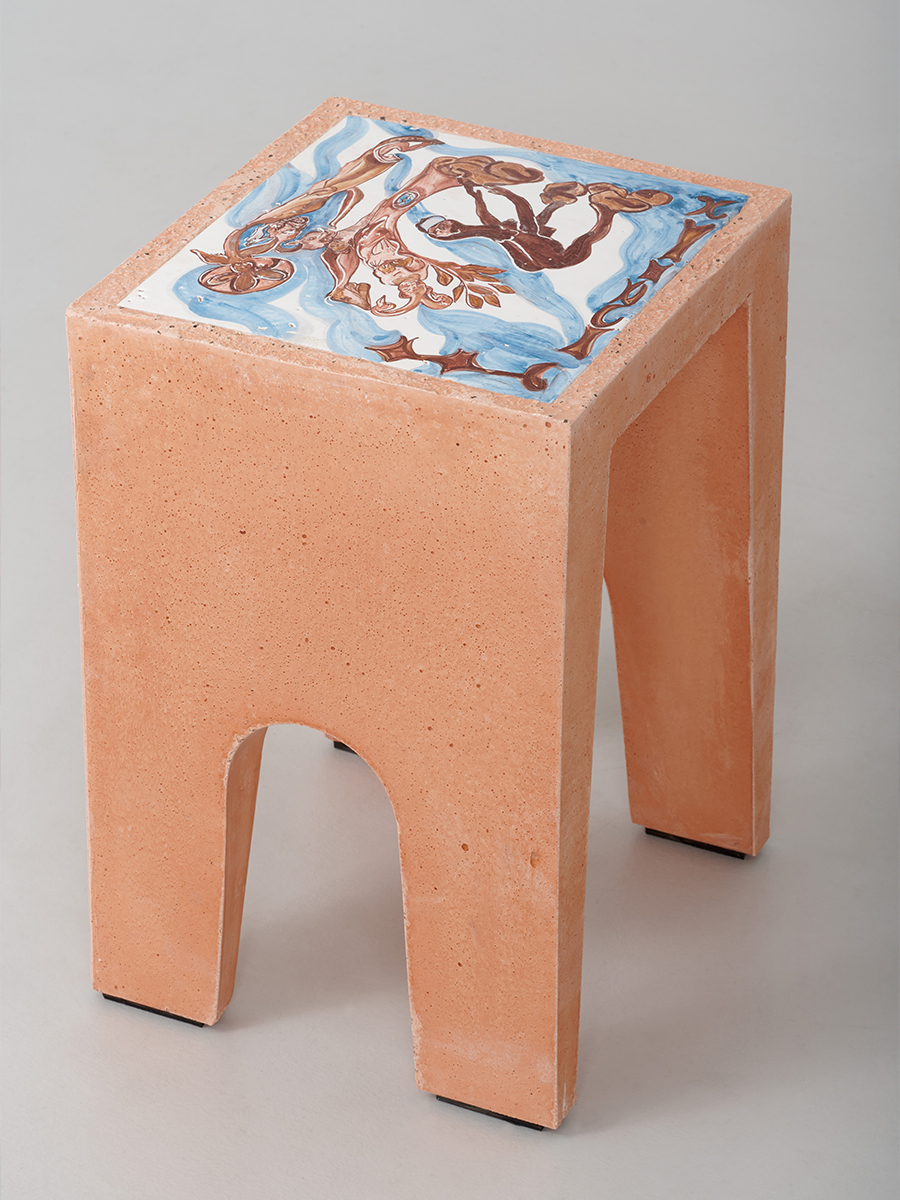
Stool, concrete and hand-painted ceramic insert. Courtesy of Nilufar, ph. Filippo Pincolini
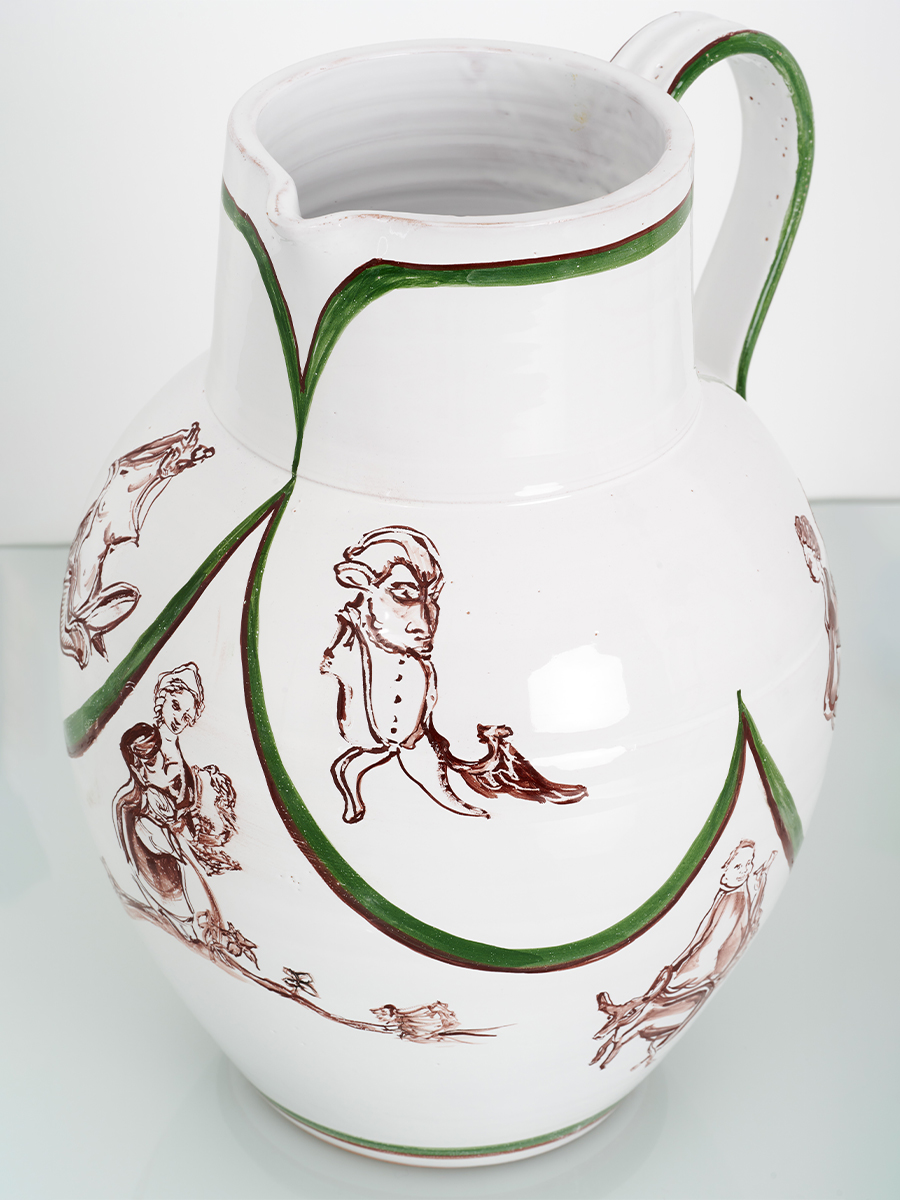
Jug, painted ceramic, unique piece. Courtesy of Nilufar, ph. Filippo Pincolini

Reconstruction, painted ceramic on an ancient Baroque tile. Courtesy of Nilufar, ph. Filippo Pincolini

Portrait of Lola Montes Schnabel. Courtesy Nilufar, ph. Alex Majoli
